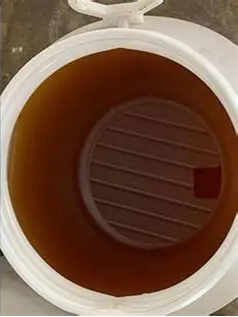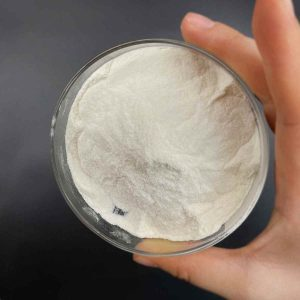1. Introduction
If you’ve ever read the back of a shampoo bottle or a toothpaste tube, you’ve likely seen the words ‘sodium lauryl sulfate’—often abbreviated as SLS. But what exactly is it? And how does it differ from similar-sounding ingredients like sodium laureth sulfate or coco betaine? This article unpacks the science behind sodium lauryl sulfate, compares it to other common surfactants, and helps you understand why it’s used—and sometimes avoided—in everything from soaps to herbicides.

2. What Is Sodium Lauryl Sulfate?
Sodium lauryl sulfate (SLS), also known as sodium dodecyl sulfate or natrium lauryl sulfate, is a powerful anionic surfactant. The meaning of surfactant? It’s a compound that lowers surface tension between liquids or between a liquid and a solid—making it easier to spread, foam, or clean. SLS is derived from lauryl alcohol (often sourced from coconut or palm kernel oil) and is widely used for its excellent foaming and cleansing abilities.
You might also see it labeled as sls sodium lauryl sulfate, na lauryl sulfate, or simply lauryl sulfate. Despite the many names—sls sodium, sls sulfate, sodium dodecyl sulfate—it’s the same molecule: CH₃(CH₂)₁₁OSO₃⁻Na⁺.
3. How SLS Compares to Other Common Surfactants
Not all surfactants are created equal. They fall into four main categories: anionic, cationic, non-ionic, and amphoteric. SLS is firmly in the anionic camp, meaning it carries a negative charge in water. This gives it strong cleaning power but can also make it more irritating to skin and eyes compared to milder alternatives.
3.1 Sodium Laureth Sulfate (SLES): The Gentler Cousin
Sodium laureth sulfate—also called sodium lauryl ether sulfate, sodium lauryl ether sulphate, or laureth sulphate—is often confused with SLS. The key difference? SLES is ethoxylated, meaning it’s been treated with ethylene oxide. This makes it less harsh and less likely to cause irritation, which is why it’s commonly found in shampoos and body washes labeled ‘gentle.’
However, the ethoxylation process can sometimes lead to trace contamination with 1,4-dioxane, a potential carcinogen—though modern manufacturing minimizes this risk. In terms of performance, SLES produces richer foam than SLS but is slightly less effective at cutting through grease.

3.2 Mild and Natural Alternatives: Alkyl Polyglucosides and Amino Acid-Based Surfactants
For those seeking sulfate-free or bio-based options, surfactants like decyl glucoside, coco glucoside, and sodium cocoyl glutamate are gaining popularity. These are non-ionic or amphoteric and derived from renewable resources like coconut oil and glucose.
- Alkyl polyglucoside (APG) surfactants are biodegradable, non-toxic, and gentle—ideal for baby products and eco-friendly cleaners.
- Sodium lauroyl sarcosinate and sodium cocoyl isethionate offer good foaming with low irritation, often used in ‘sulfate-free’ shampoos.
- Cocamidopropyl betaine (also called coco betaine, amidopropyl betaine, or cocamido) is an amphoteric surfactant that boosts foam and reduces the harshness of anionic surfactants like SLS when blended together.
3.3 Cationic and Specialty Surfactants
Cationic surfactants like cetyl trimethyl ammonium bromide (CTAB) or cetyltrimethylammonium bromide carry a positive charge. They’re not used for cleaning but for conditioning—think hair conditioners or fabric softeners. They’re also used in labs and disinfectants due to their antimicrobial properties.
Other niche surfactants include polysorbate 80 (a nonionic surfactant used in food and pharmaceuticals), Span80, Pluronic 127 (poloxamer 188), and even fluoro surfactants for high-performance industrial uses.
4. SLS in Non-Cosmetic Applications

Beyond personal care, sodium lauryl sulfate for sale is also used in agriculture and industrial settings. As a surfactant for herbicides or a wetting agent for grass, SLS helps active ingredients spread evenly and stick to waxy plant leaves. However, it’s not always the best choice—methylated seed oil or lignin sulfonate may offer better penetration with less phytotoxicity.
In labs, SLS is used to denature proteins (thanks to its strong anionic nature), while sodium deoxycholate and sodium oleate serve as milder bio surfactants in research and pharmaceuticals.
5. Safety, Misconceptions, and Market Trends
Despite online rumors, SLS is not carcinogenic—but it can be irritating, especially at high concentrations or with prolonged exposure. That’s why many brands now blend it with amphoteric surfactants like cocamidopropyl betaine to reduce irritation.
Meanwhile, companies like Rohit Surfactants Private Limited supply industrial-grade SLS and alternatives like ammonium lauryl sulfate (also called ammonium dodecyl sulfate or ammonium lauryl sulphate) for specialized formulations.
Bio surfactants—such as those derived from microbes or plant oils—are rising in popularity due to sustainability concerns. Sodium coco sulfate (sometimes mislabeled as coco sodium sulfate) is a common ‘natural’ alternative, though it’s chemically very similar to SLS.
6. Conclusion
Sodium lauryl sulfate remains one of the most effective and cost-efficient anionic surfactants available. But it’s not the only option—and often not the gentlest. Whether you’re formulating a shampoo, a weed killer, or a lab reagent, understanding the differences between anionic, cationic, non-ionic, and amphoteric surfactants helps you choose the right tool for the job. From ethoxylated alcohols like laureth to sugar-based alkyl polyglucosides, the surfactant world is diverse, dynamic, and full of alternatives for every need.
Our Website founded on October 17, 2012, is a high-tech enterprise committed to the research and development, production, processing, sales and technical services of ceramic relative materials such as What. Our products includes but not limited to Boron Carbide Ceramic Products, Boron Nitride Ceramic Products, Silicon Carbide Ceramic Products, Silicon Nitride Ceramic Products, Zirconium Dioxide Ceramic Products, etc. If you are interested, please feel free to contact us.


